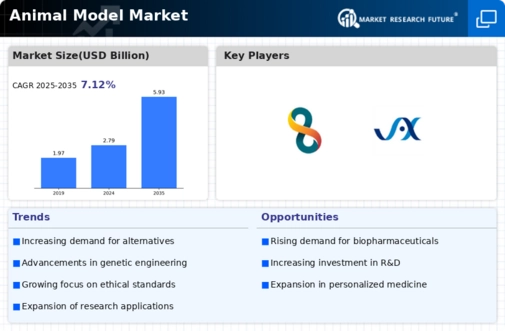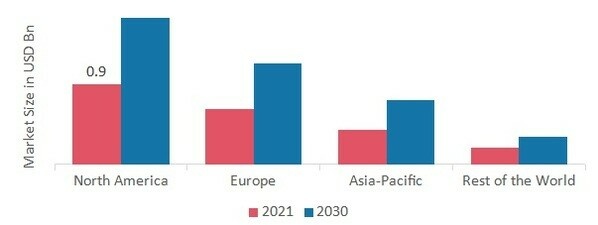Market Analysis
Animal Model Market (Global, 2025)
Introduction
In the midst of the burgeoning demand for new drugs and the increasing prevalence of chronic diseases, the animal model market is set to play a crucial role in advancing biomedical research and drug development. In order to understand complex biological processes and to test the efficacy and safety of new drugs, the use of animal models has become indispensable. These models are invaluable in providing insights into human physiology and pathophysiology and are critical in enabling the translation of laboratory findings into clinical applications. In addition, ethical considerations concerning animal research are driving the development of more refined and humane methods, which are shaping the future of the animal model market. Moreover, the market is characterized by a complex interplay between scientific advances, regulatory frameworks, and technological innovations, which together are driving the evolution of animal models in research settings.
PESTLE Analysis
- Political
- In 2025, the political climate of the animal model market is dominated by the regulation of animal experimentation. The European Union has established the directive 2010/63 / EC, which requires that a minimum of 80% of all animal experiments comply with the principles of the 3Rs. This directive has an effect on the 12 million animals used in research in the EU each year and is followed by a rise in scrutiny and compliance costs for companies operating in this sector.
- Economic
- In 2025, the market for animal models will be characterized by an increased investment in biotechnology and pharmaceutical research. In the United States, the National Institutes of Health (NIH) will allocate 42 billion dollars for biomedical research in 2024, an increase of 5 percent over the previous year. This will support the development and use of animal models, and will increase the demand for high-quality research products and services. In addition, the world's spending on animal testing is expected to reach $ 3.5 billion in 2025, reflecting the growing use of animal models in drug development.
- Social
- Social attitudes towards animal experimentation are changing, and are becoming more and more ethically minded and concerned with the well-being of animals. A poll in 2024 showed that 67% of Americans supported stricter regulations on animal experimentation, a sign of a shift in public opinion. This change in public opinion is forcing companies in the animal model market to adopt more humane practices and to invest in alternative methods, such as in vitro testing, in order to meet consumer expectations and ethical standards.
- Technological
- In the animal model market, technological advances are playing an important role. Artificial intelligence (AI) and machine learning are expected to increase the efficiency of animal studies by 2025. In fact, AI-based platforms are expected to reduce the time needed for data analysis by up to 30%, enabling faster insights into data. Also, genetic engineering innovations, such as CRISPR, are enabling the development of more accurate animal models. These developments are expected to increase the accuracy of preclinical studies.
- Legal
- The legal framework regulating the use of animals as models is becoming more and more strict. In 2024 the United States passed a law that prohibited the use of animals as models. The Animal Protection Act was amended with stricter penalties for infringements, with fines of up to $250,000 for noncompliance. This legal framework makes it necessary for companies to invest in compliance and training to avoid legal consequences. Also, the 3Rs are being increasingly closely scrutinized, with regulatory agencies carrying out regular audits of laboratories to ensure compliance with ethical standards.
- Environmental
- A recent trend in the animal model market is to be increasingly concerned with the environment, in particular the viability of research practices. It is estimated that by 2025, some 1.4 million tons of waste will be produced annually by animal research laboratories, and this has led to calls for more sustainable waste management practices. Green initiatives such as the reduction of the use of hazardous materials and the increase of the use of recycled materials are being increasingly adopted by companies to reduce their impact on the environment. Also, the development of alternative methods for testing products is expected to help reduce the overall impact of animal research on the environment.
Porter's Five Forces
- Threat of New Entrants
- The Animal-Mascot Market in 2025 is characterized by moderate entry barriers. Although initial investment in research and development, regulatory compliance, and ethical issues can be high, the growing demand for animal models in drug development and research offers opportunities for new entrants. However, established companies with a strong brand and wide network can be a challenge to new entrants.
- Bargaining Power of Suppliers
- The bargaining power of suppliers in the animal market is generally low because of the availability of many sources of animal models and related services. The large number of suppliers reduces the influence of a single supplier. Furthermore, advances in technology and breeding methods have increased the supply of animal models, which further reduces the bargaining power of suppliers.
- Bargaining Power of Buyers
- The buyers of Animal Models in the market have considerable power over suppliers, primarily because of the presence of several alternatives and the critical nature of their research needs. Moreover, pharmaceutical companies, academic institutions and biotechnology companies have particular requirements, and can therefore negotiate the best prices and terms. Further, the growing emphasis on cost-effectiveness in research gives them an even greater incentive to seek the best offer.
- Threat of Substitutes
- The threat of substitutes in the animal-testing market is moderate, as alternative research methods, such as in vitro tests, computer simulations and synthetic biology, gain ground. But animals still offer unique insights into complex biological systems that cannot be fully replicated by alternatives. The threat of substitutes may grow as technology develops, but animal models are still essential for some research.
- Competitive Rivalry
- Competition in the Animal Models market is high, owing to the presence of a large number of established players and the constant innovation in animal model development. Competition is mainly driven by product differentiation, quality improvement and customer service. The fast-paced developments in biotechnology and the increasing demand for animal models from various research fields are putting increasing pressure on existing companies.
SWOT Analysis
Strengths
- Established regulatory frameworks supporting animal research.
- Diverse range of animal models available for various research needs.
- Strong investment from pharmaceutical and biotechnology companies.
- Growing acceptance of animal models in preclinical research.
Weaknesses
- Ethical concerns and public opposition to animal testing.
- High costs associated with breeding and maintaining animal models.
- Limited availability of certain species for specific research.
- Variability in animal responses can affect research outcomes.
Opportunities
- Advancements in genetic engineering and biotechnology to create better models.
- Increasing demand for personalized medicine driving research needs.
- Expansion of research in emerging markets with less stringent regulations.
- Collaboration opportunities between academia and industry for innovative models.
Threats
- Stricter regulations and potential bans on animal testing in some regions.
- Growing competition from alternative testing methods, such as in vitro and computational models.
- Public backlash and activism against animal research impacting funding.
- Economic downturns affecting research budgets and investments.
Summary
The Animal Models Market in 2025 is characterized by a strong regulatory support and substantial investment from the pharmaceutical industry, which bolsters its growth. However, the main obstacles are ethical concerns and high operational costs. Opportunities are a technological development and a growing demand for individualized medicine. Threats are the development of alternative research methods and regulatory changes. Strategically focusing on innovation and collaboration will be key to navigating these complexities.





Leave a Comment